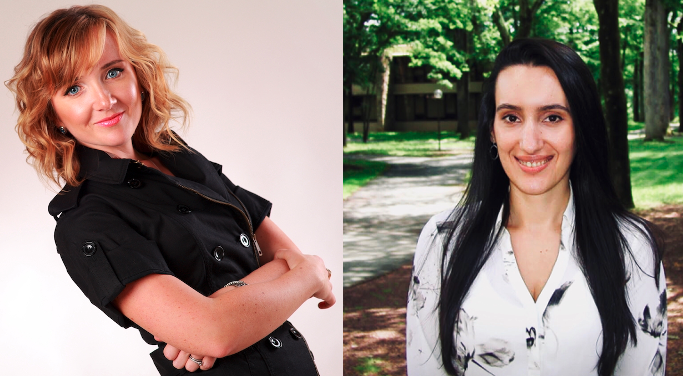
Anastasiya Lipnevich, PhD (left) and Kalina Gjicali, PhD (right)
Alumna Kalina Gjicali, PhD & Professor Anastasiya Lipnevich, PhD showed how the Theory of Planed Behavior explains variance in behavioral engagement and overall math performance using PISA data.
Article Title: Got math attitude? (In)direct effects of student mathematics attitudes on intentions, behavioral engagement, and mathematics performance in the U.S. PISA
Abstract: Academic performance is predicted by a multitude of demographic, contextual, cognitive, and noncognitive factors. The noncognitive factors predicting achievement in mathematics that have previously been investigated in depth are study skills, confidence, self-efficacy, and personality traits (Kyllonen, 2012). Limited applied research has explored the predictive value of attitudes and beliefs in mathematics achievement using representative data of U.S. students. The current study uses the theory of planned behavior (TPB) to explain high school students’ performance in mathematics in large-scale assessment data by using the PISA 2012. Along with key demographic factors, results indicated that students’ attitudes, subjective norms, and perceived behavioral control beliefs explained 21.1% of the variability in intentions to pursue and major in mathematics in the future, 59.4% of the variability in behavioral engagement with mathematics learning, and 30.7% of the variability in mathematics performance.The study results have implications on: (1) the applicability of an attitude-behavior framework in educational research for understanding academic performance, (2) the importance of perceived control and self-efficacy beliefs for predicting behavioral engagement in mathematics (e.g., paying attention in class, completing homework, studying for exams) and subsequent mathematics performance, and (3) the practical significance of students’ attitude towards mathematics on their intentions to pursue mathematics coursework in post-secondary education and possess math-relevant career aspirations.
Click here for 50 day access to the journal article: https://www.sciencedirect.com/science/article/pii/S0361476X21000783?dgcid=coauthor




No comments yet.